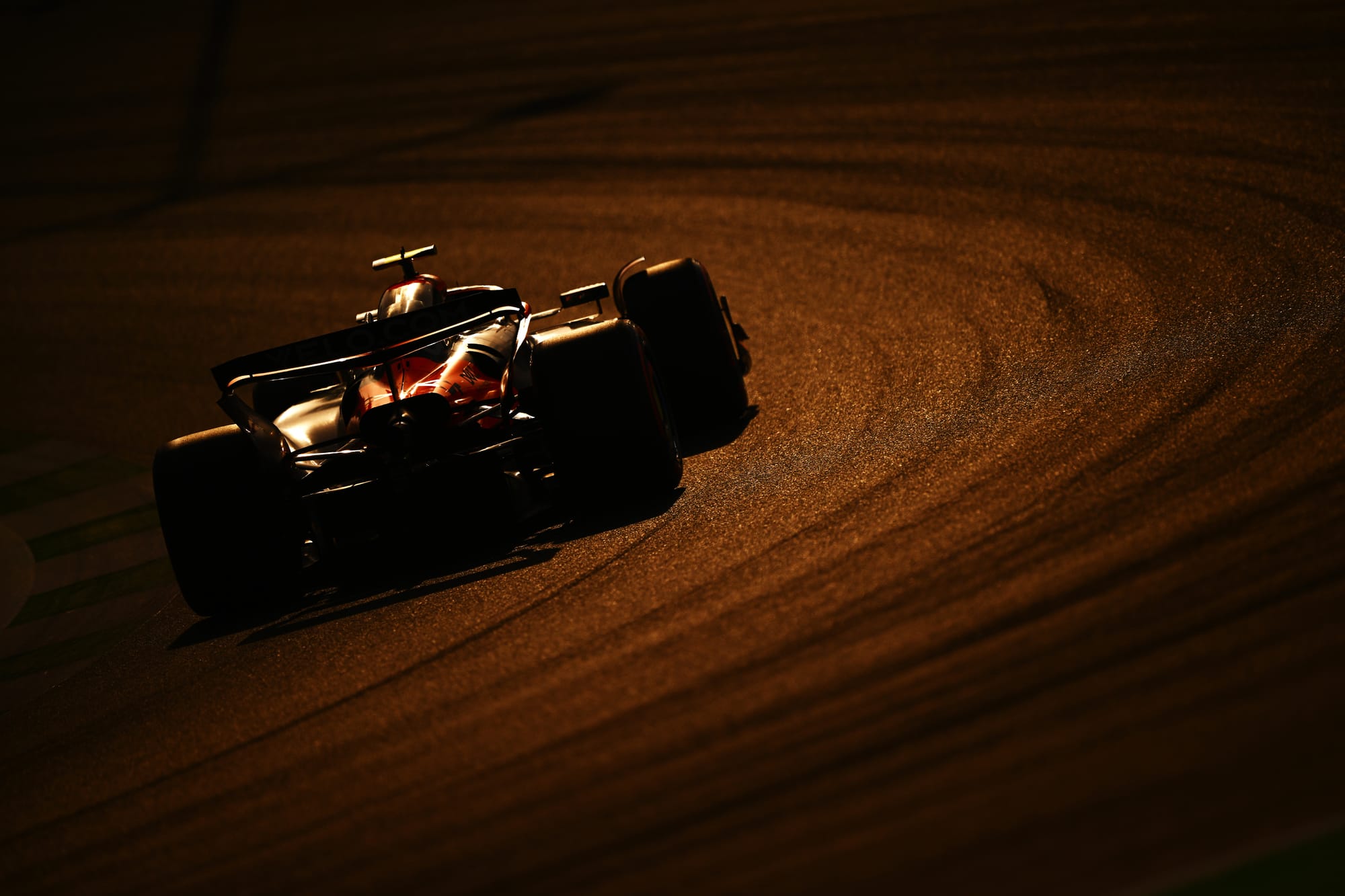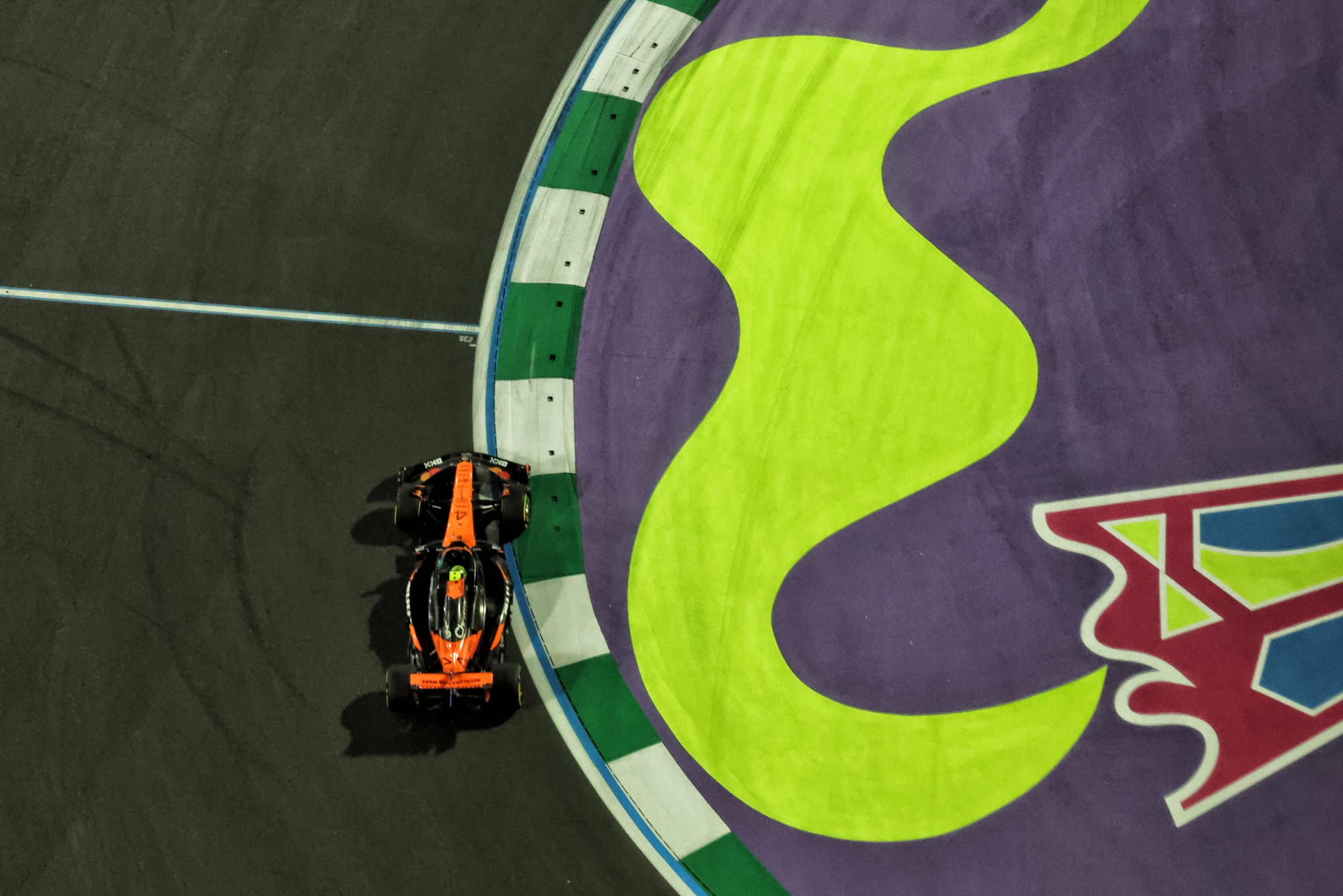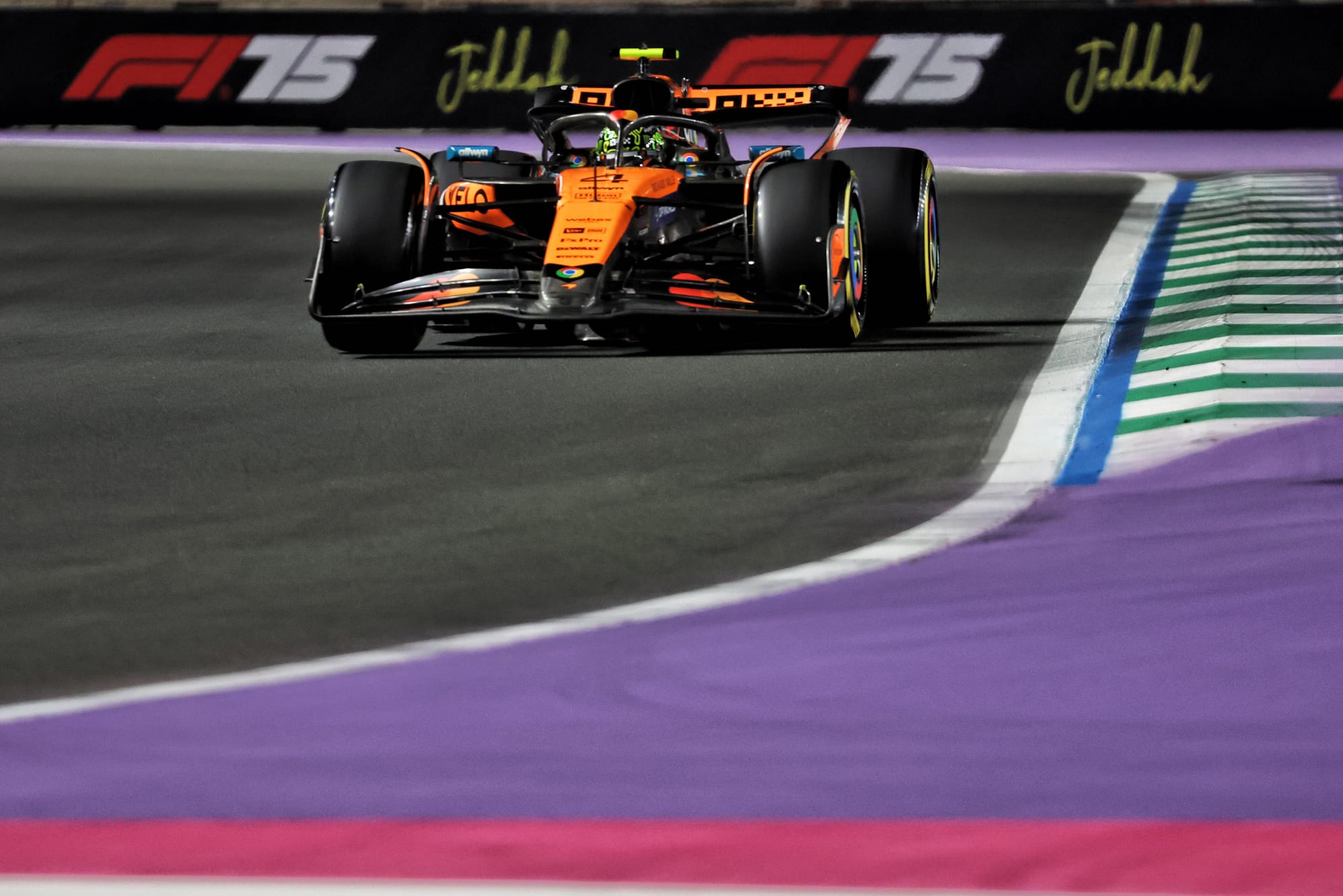The expensive qualification accident of Lando Norris at the Saudi Grand Prix is another “episode” to get caught by McLaren Formula 1 car at the limit.
After filling the training and looked at the favorite for the post, Norris made his Jeddah race much more delicate than she should be scoring in the first sector during her first round in Q3.
He will start the 10th, with Max Verstappen on Pole and the McLaren teammate from Norris and the main rival of the Oscar Piastri championship in the second.
Norris admitted that after qualifying himself, he “should not take some stupid risks as I seem to have done”, but thought it was a different situation from his previous disappointment a week ago in Bahrain, where Norris strongly criticized his own performance and his conduct.
“It has nothing to do with that, it’s just a separate error,” said Norris in Jeddah.
While the circumstances of this bad judgment of the entry were different from Bahrain, where Norris fought against Piastri and had style incompatibilities with the 2025 McLaren exposed, the boss of the Andrea Stella team indicated that there was a link in the way Norris behaves at the limit.
“Everything was ready for a very strong weekend, but I think that at Q3, when Lando tries to remove a few more milliseconds from the car, what we see – and I think we are starting to see this even better in the data, in terms of identification of what is happening – the car does not answer as it expects,” said Stella.
“It is a behavior that surprises him.

“In a way, it’s almost completely episodic. What’s going on is an episode, and it’s an episode that, I think, starts from some of the work we have done on the car.
“It made the car faster overall, but I think it has removed something from Lando in terms of predictability of the car once it grows the car on the limit.”
This is linked to the well -established characteristics of McLaren, which since the tests has been very fast but capable of catching its drivers.

Norris seems more inclined to this, in part because his driving style to hold a higher minimum speed in the area requires the car more and can induce problems, and in part because it seems to feel and judge the limit of the car less effectively than Piastri.
Stella said that the responsibility to mitigate is partly to the team, to produce a car that gives Norris the confidence and the comfort he needs, but also on Norris to be able to adapt. Stella compared him to Lewis Hamilton by talking about the adjustment of her favorite driving style to adapt to her new Ferrari – and said that in qualification, this kind of conscious thinking is a bad adjustment.
“These cars are so fast, they are so demanding in terms of adopting a very natural driving style,” said Stella.
“Because these cars are too fast to think; you get either what you plan from the car, or you are going to be slow. And Lando does not accept to be slow.”
The involvement is that Norris’s disconnection with McLaren has indeed left it subject to errors in key moments,, Like taking 12 km / h (7.5 MPH) too much speed in turn 4 in Jeddah,, Or do not align its braking and steering locking as precisely as necessary.
And as a result, McLaren bites him more – because Stella said, he tends to lose grip very suddenly, probably at a point that Piastri does not bring the car to Norris.
His example was that if the driver pushes a meter later on the brakes, or is 1 km / h faster in the middle of the area, the car reacts in a way that the driver does not expect and leaves them “a little passenger”. Norris has been even more inclined to this with the additional speed he tried to take in his turn of the quarter. He therefore does not judge enough the risk and the reward – although Stella suggested that this could be partly because the car does not give drivers with large comments and that slightly lets them guess what he will do.

Questioned by the race if the trend that McLaren observes with the difficulties of the Q3 of Norris is a wide of small inaccuracies in different ways, or if something specific connects them, Stella said: “The car has a certain performance envelope. But the way you exploit this envelope is a bit delicate for our drivers.
“There is a lot of handle, there is a lot of handle, (then) the handle disappears. You go 1 km / h faster and the grip disappears.
“This transition seems to be quite clear, and the comments you receive from the car in terms of understanding and leaning on this limit are relatively numb.
“I think this is where drivers must almost use a lot of guessing the behavior of the car and there is not much information and identification from the car.
“This is what we fight a bit from a team point of view (with), in terms of realization of what we want by designing a car that provides this type of feedback to drivers, and what drivers can diffuse (with) on their side because they have to use a lot of guessing what the car will do.
“You see that each session, when we push 99%, we seem to have a decent competitiveness.
“But when it is time to have this last tenth of a second, then it becomes quite difficult to go and materialize it.”
McLaren may be able to rectify this during the season with improvements to his car, but until it proves that Norris needs to stop to chase the latest laptop milliseconds – at least on tracks like Jeddah, where the reward for realization is great, but the risk of being mistaken is extremely expensive.


